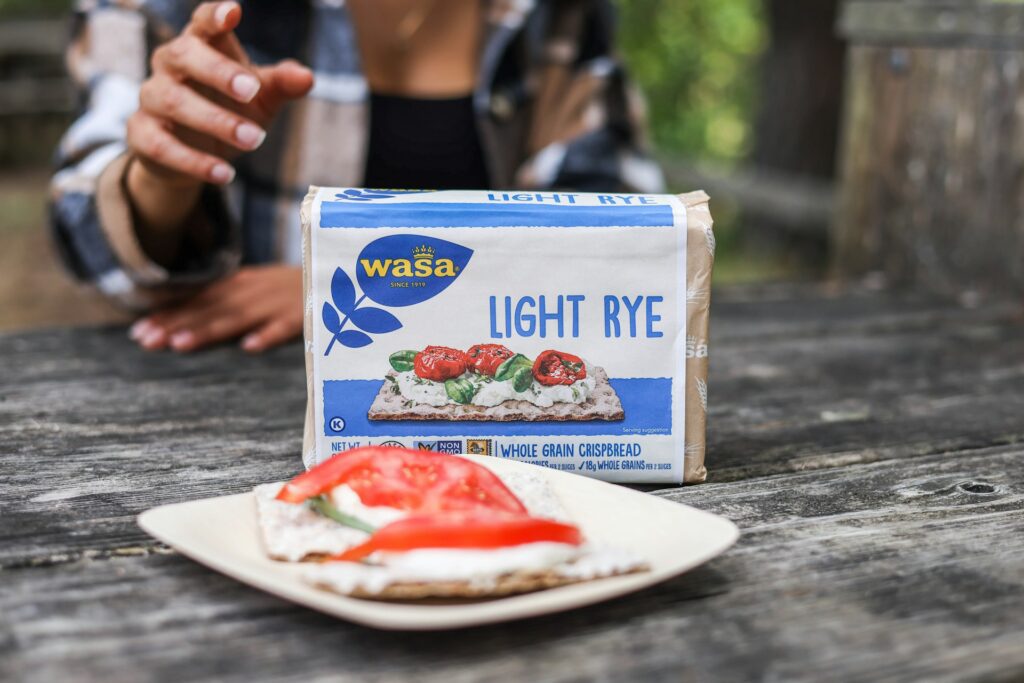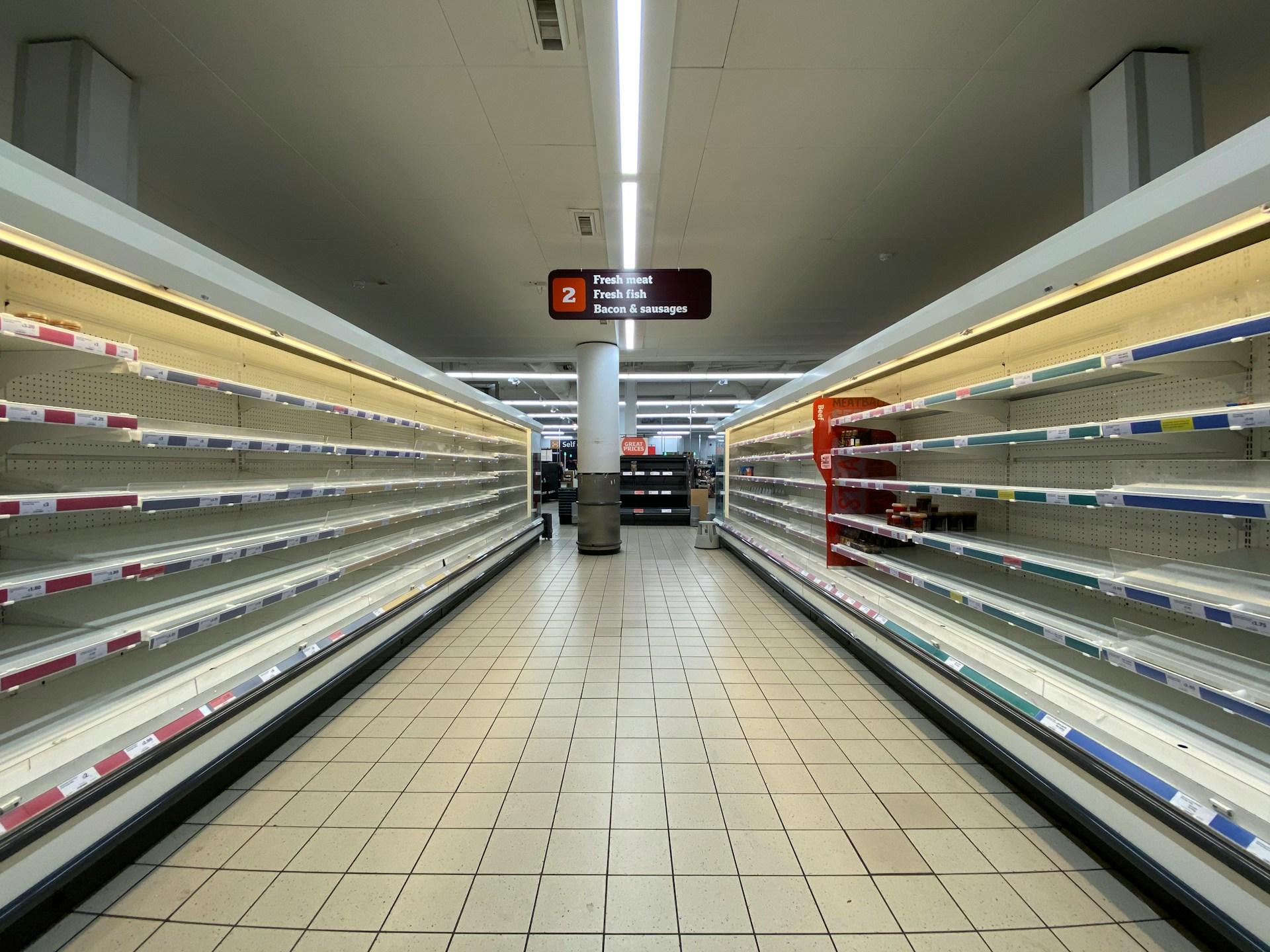Make sure you take time to prepare your food stock and drinking water supplies before a crisis strikes.
Sudden events such as extreme weather, a power outage or even conflict can quickly affect daily life and disrupt our food supply chain.
Without constant food production and regular deliveries, shelves not refilled – quickly become empty. And typically during these situations, it does not take much to spook the general public and as per human nature we rapidly resort to stockpiling essential items.
In an emergency the standard practice here in Sweden is to have prepared and planned sufficient food and water for you and those you live with to be able to get by for at least a week without shopping.
If there is a long-term power outage, disturbance or crisis in society, as private individuals we have a responsibility to prepare our own water and food provisions, which frees up society’s resources to be used to help those that cannot fend for themselves such as the elderly and the sick.
In our blog you’ll find examples of food items that are suitable for being stored at home and some thoughts around how much food you’ll typically need. If you do face a dire situation and there is no access to power, it makes sense to use up perishable food and foods from the refrigerator first. After these have been exhausted use the foods that you have in the freezer, checking their condition to make sure that they are edible.
How much food then do I need to store?
I guess the first thought should be to tailor food items to what you want to eat and in sufficient quantities to meet your household’s needs.
So, take some time to think about what you like to eat and use some common sense, storing foods that are difficult to prepare or are unlikely to be eaten may be a costly mistake. And don’t forget any special dietary needs for allergies, as well as if you need special food for small children or food for pets.
A good non-perishable food stock consists of food that gives energy, is normal for you to eat and can be cooked quickly or can be eaten without cooking or does not require a lot of water to prepare or cook it, and can be stored at room temperature. Remember to check the storage instructions on the packaging and how to store it after opening.
An adult with a low to medium activity level needs approximately 1800-2800 kcal per day. The energy needs of children and young people vary greatly with age, ranging from 1100 kcal per day to 3000 kcal per day.



How can you know how many calories the food provides?
In Sweden’s Food Database, you can see how much energy is in roughly 2,000 different food items. The energy content in the Food Database is calculated using so-called standard factors for protein, carbohydrates, fat, alcohol and dietary fibre.
Take a look at the Swedish Food Database.
How much energy do adults need?
In the table below (Source) you can see approximate reference values for energy intake, based on the Nordic nutritional recommendations. There is no formula that can calculate a person’s exact energy needs. Your body weight and how it behaves when you consume a certain amount of food will give a clear signal if you are achieving the right balance.

The Swedish organisation Livsmedelsverket works to ensure that the food produced, sold and served in Sweden is safe and honest, and works towards a society where it is easy for people to eat in a healthy and sustainable way. Making sure there is access to safe food and drinking water supplies in everyday life, and in a crisis.
Website: https://www.livsmedelsverket.se/



Preparing food stocks before a crisis.
If you are thinking of putting together a list of foods items to last you a week, you need to ensure that those items can be stored at room temperature for a long time and there is enough food for everybody in your household.
And don’t forget the water!
It is important that there is water both for drinking and cooking, calculating at least three to five litres per person per day.
If possible store your drinking water in a dark and cool place in plastic containers intended for drinking water. In the event of a long-term crisis or water shortage, you’ll need also to have spare water cans to be able to collect water at the municipality’s designated water collection location.
By using wet wipes for personal hygiene and hand sanitiser, you’ll also reduce your overall water consumption – reserving your water supplies for drinking and cooking.
Facts about Sweden’s Preparedness Week
Preparedness Week is part of the work to strengthen Sweden’s crisis preparedness and total defence, and brings together a wide range of actors, such as municipalities, civil society, industry organisations, authorities and the business community.
Preparedness Week (formerly Crisis Preparedness Week), which is week 39 is arranged annually by MSB. The aim is to get more people to strengthen their own preparedness during a crisis and to motivate municipalities, state authorities, companies and non-profit organisations to get involved in Sweden’s preparedness.
You can also join along on Preparedness Week, download from MSB a practice exercise for a week. Download link for PDF.
Example food supply list
To help you plan your food preparation we have read through the information available at www.msb.se and come up with a list of food items that should last a week. We are not nutritional experts, so this is our opinion and you would need to develop your own personal approach to what food you would need, but with our list you at least have a starting point.
The list below is based on how much an average adult needs to eat in a week.
Examples of food to have stored at home:
- Powdered mashed potatoes (100 grams of powder)
- Milk* (2 litres)
- Quick-cook pasta (i.e. macaroni), noodles, pancake mix, falafel mix or rice (500 grams)
- Powdered soup (1 bag)
- Knäckebröd and biscuits (550 grams)
- Soft bread with a long shelf life, e.g. tortilla (80 grams)
- Porridge oats, rye flakes, breakfast cereals (350 grams)
- Soft cheese, peanut butter, other durable spreads (large tube)
- Meat and fish preserves, e.g. tuna, mackerel in tomato sauce, ravioli, meatballs, etc. (1,150 grams)
- Canned soup (750 grams, about three cans)
- Ready-mixed soppa, blueberry and rosehip soppa (300 grams)
- Canned vegetables (1,000 grams)
- Ready-to-eat beans and lentils (265 grams)
- Cooking oil
- Jam (240 grams)
- Almonds, nuts or seeds (265 grams)
- Dried fruit i.e. apricots, mango, bananas, etc. (155 grams)
- Chocolate, energy bars (100 grams)
*Dry milk powder (100 grams = one litre of milk), ultra-high temperature (UHT) treated milk and milk products or plant based milk products.

More foods that are good to have at home:
- Coffee, tea, and cocoa powder.
- Honey and sugar.
- Flour, baking powder, dry yeast and vinegar, salt, stock cubes, tomato puree, spices, pasta sauces, various flavourings and spice mixes.
- Fruit, root vegetables, eggs and many vegetables can be stored at room temperature but lasts longer when refrigerated.
If you have babies and toddlers, it’s good to also have extra baby food cans, baby porridge and possibly breast milk substitute at home. At www.livsmedelsverket.se you can read more about food in case of crisis, tips on storage and how you can save water.
So, how much would it cost for the example food list?
To make this as an exercise more realistic, I did actually walk the shopping aisles of my local supermarket to try and price what a weeks supply of “ long life” food would cost.
Now apart from me being considered an undercover staff member from head office as I walked around with my list, ticking off and adding prices to each item – what I did find difficult was to get the sizes and measurements in line with the above portion recommendations.
Many of the food items don’t come in such small sizes, so I would have had to have bought what was available, often bigger but still good value per serving and often enough for two people rather than just one.
Not to go into too much boring detail, I did manage to price up all the items that I would have bought, many were own brand rather than “branded” and that covered everything from items # 1 – 18.
I would also have bought multiple items i.e. soft cheese and peanut butter or a tin of tuna and meatballs rather than just one item on the list – I do love variety. But, all of that does come at a price and I am sure if I wasn’t escorted from the store having spent far too long buying nothing I probably could have got the cost down lower.
So, “drum roll” …… what do you think it cost, here in Sweden? Make your guess now – and then you can scroll down to the bottom to see what it would have cost me.
Buy Better Quality For Less
Different items arriving daily. New & Unused, and Second hand.
How do I make the time to plan my food stock?
Take the opportunity to buy a little extra of the suggested food items when you are out doing your regular shopping, in-person or online. This way you get to add to your stock little by little, rather than panic buying with a limited choice.
It’s important as you put your food stocks together that you do regularly check the “use by or best before date”, and if it is fast approaching you can always use that item, then replace it on your next shopping trip.
But remember that food can be used even if the best before date has passed, as long as the packaging is undamaged, and using your senses if the food looks, smells and tastes alright you should be okay to use it in an emergency.
Appropriately sized packages
Depending on how many of you there are in the household – buy the right size packages for what you need. In the event of a crisis, it may not be possible to refrigerate food. It can then be good to have smaller packages of food to manage rather than thinking big and food going off because you can’t keep a large portion fresh.
Alternative cooking methods – BBQ, camping stove, etc.
Also keep in mind that in the event of a power cut, the electric cooker or oven will not work. Then it can be good to have ready-to-eat products, or to have some alternative way of cooking the food, for example on a BBQ grill, gas camping stove, or similar.
So, we hope all the above discussion gives ” food for thought” :), there are many good resources that you can visit to get information to help your food planning. Don’t forget you’ll also need somewhere appropriate to store the food under the right conditions.
Other sources of information:
https://www.krisinformation.se/en/hazards-and-risks/home-preparedness/food-in-a-crisis
https://soknaringsinnehall.livsmedelsverket.se
See more of the outdoor brands we have to offer. Catch up with our Resources page to plan your next adventure.
Total shopping would have cost 507,80 sek (Swedish krona)
Subscribe and get 10% off today.
Get the latest news, new product arrivals and discounts straight into your inbox.
Subscribe & Get A 10% Discount.
Don’t miss out on news, the latest new products and special time limited offers 🙂

